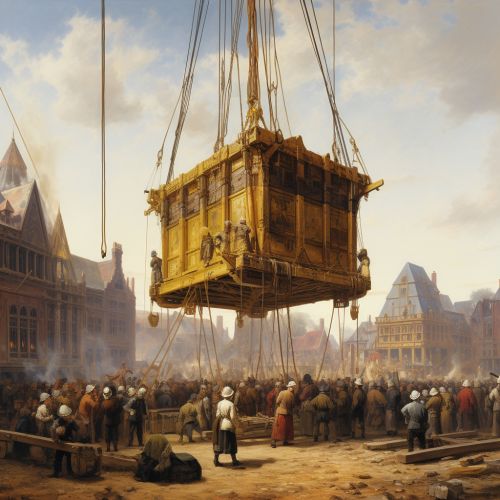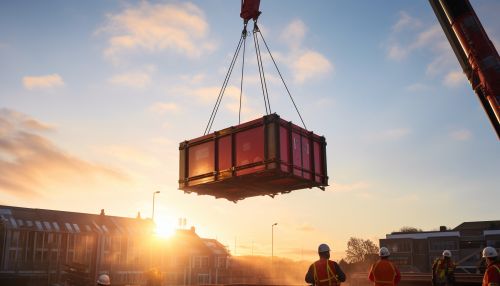Open Caisson
Overview
An open caisson is a type of deep foundation used in construction to provide support for large structures such as bridges, dams, and high-rise buildings. It is a box-like structure made of concrete, steel, or timber, which is sunk into the ground to a desired depth and then filled with concrete to form a solid base.
Design and Construction
The design of an open caisson involves several considerations. The size and shape of the caisson are determined by the load it needs to support and the soil conditions at the site. The caisson must be strong enough to withstand the pressure of the soil and any additional loads placed on it. The construction process involves digging a hole in the ground, placing the caisson in the hole, and then filling it with concrete. The caisson is typically constructed off-site and then transported to the construction site.


Types of Open Caissons
There are several types of open caissons, including box caissons, cylindrical caissons, and monolithic caissons. Box caissons are square or rectangular in shape and are typically used in shallow water or on land. Cylindrical caissons, also known as well caissons, are round in shape and are used in deeper water or in unstable soil conditions. Monolithic caissons are large, single-piece structures that are used in large-scale construction projects.
Applications
Open caissons are used in a variety of construction projects. They are commonly used in the construction of bridges, where they provide a stable base for the bridge piers. They are also used in the construction of dams, where they help to anchor the dam to the bedrock. In high-rise construction, open caissons are used to provide a solid foundation for the building.
Advantages and Disadvantages
Open caissons offer several advantages over other types of foundations. They are strong and durable, able to support large loads. They can be used in a variety of soil conditions, including soft or unstable soils. They also offer a high degree of flexibility in design and construction.
However, open caissons also have some disadvantages. They are expensive to construct and require a high level of technical expertise. They can also be time-consuming to install, particularly in difficult soil conditions or in deep water. Additionally, the construction process can be disruptive to the surrounding environment.
